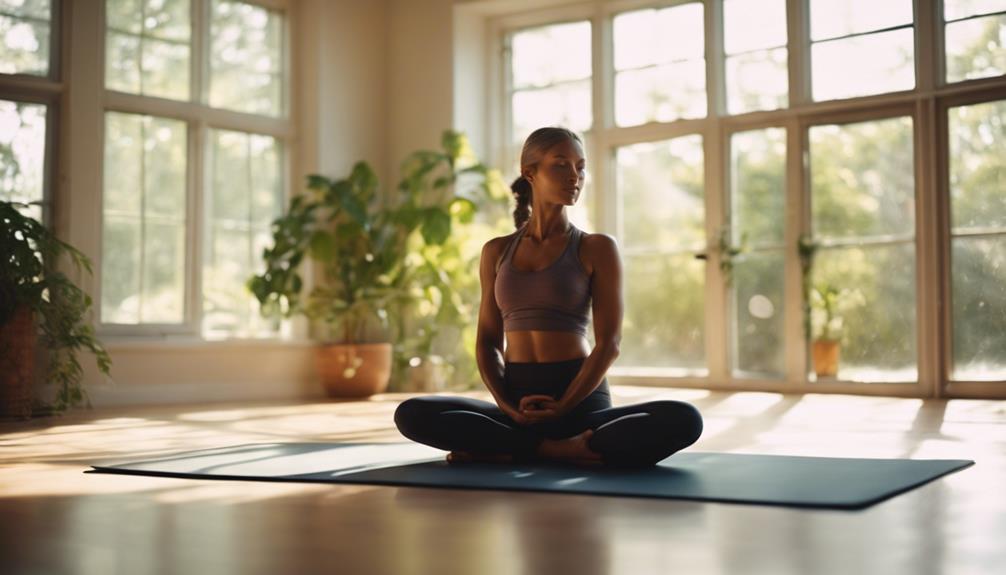Can Yoga Improve Posture

Yoga has gained immense popularity over the years, not just as a form of exercise but as a holistic approach to health and well-being. One of the most frequently asked questions among yoga practitioners and enthusiasts is, “Can yoga improve posture?” This blog post will delve deep into the relationship between yoga and posture, exploring how regular practice can lead to significant improvements in posture, alignment, and overall physical health.
Understanding Posture: The Foundation of Good Health
Posture refers to the position in which we hold our bodies while standing, sitting, or lying down. Good posture is essential for maintaining balance, reducing strain on muscles and ligaments, and promoting overall health. Poor posture, on the other hand, can lead to a host of problems, including back pain, neck pain, and even digestive issues. Understanding the importance of posture is the first step in addressing any alignment issues. Many lifestyle factors, such as prolonged sitting, lack of physical activity, and improper ergonomic setups, can contribute to poor posture.
The Role of Yoga in Enhancing Postural Alignment
Yoga provides a comprehensive approach to improving posture through a combination of stretching, strengthening, and mindfulness. Specific yoga poses target key muscle groups responsible for maintaining proper posture. For instance, poses like Mountain Pose (Tadasana) and Cobra Pose (Bhujangasana) help strengthen the core and back muscles, which are crucial for maintaining an upright position. These poses also promote better alignment by encouraging awareness of body mechanics. Additionally, yoga emphasizes breathing techniques that help to relax tension in the body, which can further aid in achieving and maintaining good posture.
Key Yoga Poses for Improving Posture
Several yoga poses are particularly effective for improving posture. Here are a few key postures to incorporate into your routine:
1. Mountain Pose (Tadasana): This foundational pose teaches proper alignment and body awareness. Stand tall with feet together, arms at your sides, and engage your core.
2. Cat-Cow Stretch (Marjaryasana-Bitilasana): This dynamic movement stretches the spine and helps to increase flexibility while promoting proper spinal alignment.
3. Child’s Pose (Balasana): A restorative pose that gently stretches the back, helping to relieve tension and improve overall flexibility.
4. Downward-Facing Dog (Adho Mukha Svanasana): This pose elongates the spine and strengthens the shoulders, aiding in proper alignment.
5. Bridge Pose (Setu Bandhasana): This pose strengthens the back and opens the chest, counteracting the effects of slouching.
Incorporating these poses into your routine can significantly enhance your posture over time.
How Consistent Yoga Practice Transforms Your Posture
Consistency is key when it comes to seeing improvements in posture through yoga. Regular practice helps to reinforce the mind-body connection, making you more aware of your alignment throughout your daily life. As you become more familiar with your body’s mechanics, you’ll start to notice the subconscious habits that lead to poor posture. Additionally, the strength and flexibility gained from yoga allow you to maintain proper posture more effortlessly. Over time, practitioners often report a decrease in discomfort and pain associated with poor posture, further encouraging them to continue their practice.
The Mind-Body Connection: Awareness and Posture
One of the unique aspects of yoga is its focus on mindfulness and awareness. As you flow through poses, you develop a greater understanding of how body alignment affects overall well-being. This heightened awareness translates to daily life, encouraging better posture even when you’re not on the mat. The practice of focusing on your breath and bodily sensations helps to cultivate a sense of mindfulness that can be applied in various situations—whether sitting at a desk, standing in line, or walking. This mental connection reinforces the importance of maintaining good posture throughout the day.
Yoga as a Holistic Approach to Wellness
Beyond just physical benefits, yoga promotes a holistic approach to health and well-being. Improved posture can lead to better digestion, increased energy levels, and enhanced mood. When your body is aligned properly, it can function more efficiently, leading to improved overall health. Furthermore, the stress-reducing properties of yoga can help alleviate tension that may contribute to poor posture. By combining physical practice with mental and emotional well-being, yoga serves as a powerful tool for improving posture and enhancing quality of life.
Integrating Yoga into Your Daily Routine for Better Posture
To reap the benefits of improved posture through yoga, it’s essential to integrate the practice into your daily routine. Start with short sessions, perhaps 10 to 15 minutes each day, focusing on the key poses mentioned earlier. Over time, you can gradually increase the duration and complexity of your practice. Consider joining a local class or following online tutorials to stay motivated and learn proper techniques. Remember that consistency is more important than intensity; even short, regular sessions can lead to lasting improvements in posture.
Conclusion: The Transformative Power of Yoga for Posture
In conclusion, the question “Can yoga improve posture?” is answered affirmatively. Regular yoga practice can lead to significant improvements in posture, alignment, and overall physical health. By focusing on key poses, developing body awareness, and cultivating mindfulness, practitioners can experience the transformative effects of yoga. As you embark on your journey toward better posture, remember to be patient and consistent. With time and dedication, you will likely notice a positive shift not only in your posture but also in your overall well-being. Embrace the power of yoga, and unlock the benefits of improved posture today!What Yoga Does For You